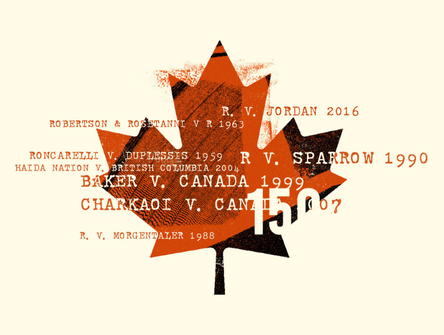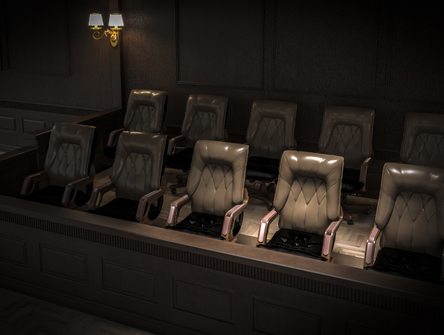A round-up of the Canadian Bar Review
A quick peek at the latest from legal scholarship on emerging issues in law.

In the latest from legal edition of the Canadian Bar Review:
Discrimination in posthumous conception for LGBTQ+ families in Canada
In the age of assisted reproductive technologies, a child can be conceived after the death of one of their intended parents. However, as Laura Cárdenas, an associate at IMK LLP, explains, posthumous conception is inadequately addressed by our legislative frameworks in Canada. Only British Columbia, Ontario and Saskatchewan have laws recognizing parentage between a deceased parent and their posthumously conceived child. But all three include requirements that harm LGBTQ+ families and perpetuate historical disadvantages and stereotypes against them. Under BC's Family Law Act, the deceased's genetic material must be used to establish parentage. This is problematic given that LGBTQ+ families are more likely to use assisted reproduction to procreate, which means they wouldn't fulfill the genetic connection requirement. There's no such mention of genetics in Ontario and Saskatchewan's respective laws, but all three provinces require the existence of a conjugal relationship between deceased and surviving parent. There is also a statute-imposed maximum of two parents:
“By requiring a genetic connection between a deceased parent and their posthumously-conceived child, the parentage of a posthumously-conceived child of an LGBTQ+ parental unit will be denied at a higher rate than the parentage of a posthumously-conceived child of a heterosexual and cisgender couple. By requiring parents of a posthumously conceived child to have been married or in a marriage-like relationship, legislation on posthumous conception disparately excludes LGBTQ+ families from the protections and benefits accorded through legally-recognized parentage and denies them any type.”
Cárdenas concludes that the three requirements are prima facie discriminatory on the grounds of sex, sexual orientation, gender modality, and family status, and makes a case for provinces to update their family laws to make them more inclusive.
The length of civil trials and time to judgment
We know that lengthy trials drive up costs for litigants, monopolize scarce judicial resources and threaten to delegitimize our judicial system in the eyes of its users. Unfortunately, though it takes reliable data to come up with solutions to reform Canada's civil trial systems, we have no good idea how many civil trials there are every year in Canada and how long they take. It's why Kevin LaRoche, M. Laurentius Marais and David Salter have undertaken a survey of the frequency and length of Canadian trials, as well as reserve periods. Accessing judgments of the superior courts in Ontario and British Columbia and those of the Federal Court of Canada, they draw a number of conclusions. Time-in-trial is estimated to be substantially longer in the Federal Court (mean length 13.4 days) than it is in the Ontario (7.1 days) or British Columbia (8.4 days) superior courts. They also estimate that roughly "one-third of civil, non-family bench trials, regardless of the jurisdiction, are likely to exceed the average in terms of duration, and that about two out of every five judgments, regardless of jurisdiction, are likely to exceed the average time that it takes to decide trials." They go on to assess how time trial limits work in the U.S. as an effective case management tool, and propose that Canadian civil justice systems should consider further implementing discretionary, judge-ordered time-limited trials.
Ethics for government lawyers
"Among the Canadian legal establishment, government lawyers remain a mystery.," writes Dalhousie's Andrew Flavelle Martin. "Their work, other than perhaps that of litigators, is largely hidden to those on the outside." And yet they represent a large part of the Canadian legal profession and wield lots of influence in Canadian society. Unfortunately, government lawyers receive little attention in academic legal ethics research and, for that matter in teachings at law school. He calls on governments to embrace transparency by encouraging "increased participation by their lawyers in informing and shaping the literature about them" – even if he hardly expects them to disclose the legal advice they receive proactively. He also recommends that academics reach out to government lawyers to get involved in writing about ethics.
Biased impartiality
We are colour blind when it comes to our jurisprudence on judicial impartiality, Sujith Xavier of the University of Windsor writes in his paper. The author reaches this conclusion having surveyed over 800 cases that followed the 1997 landmark Supreme Court of Canada decision in R v RDS, a ruling involving comments made by the trial judge regarding police officers who can overreact, "particularly when they are dealing with non-white groups" – a comment the court had noted was "troubling" but not enough to conclude amounts to "reasonable apprehension of bias." Regarding the subsequent case law, Xavier observes that the evidentiary threshold to establish bias based on a predisposition to an outcome is high and that judges that did, in fact, adopt an antiracist perspective tended to face judicial backlash. Hence the need to incorporate more race-conscious awareness in addressing the challenges to impartiality.
Racial profiling and the perils of ancillary police powers
In his piece, Terry Skolnik of the University of Ottawa argues that the Supreme Court of Canada tends to overlook how new police powers can result in racial profiling. For starters, it fails to properly consider how racial profiling is a unique harm that breeds distrust of the police and of the justice system. It does not impose adequate oversight mechanisms that foster transparency and accountability. What's more, it does not conduct a rigorous proportionality analysis that evaluates the harms of racial profiling. "For these reasons, the Supreme Court of Canada must revisit the ancillary powers doctrine, existing common law police powers, and judicially authorized police powers," Skolnik concludes. "Going forward, only Parliament should have the jurisdiction to create police powers, while courts review their constitutionality."
Quand la décriminalisation des drogues devient une question de droit à la vie
Nicolas Rioux, auxiliaire d’enseignement à la Faculté de droit de l’Université Laval, se penche sur la constitutionnalité de la criminalisation de la possession simple de drogues au Canada au regard du droit à la vie, à la liberté et à la sécurité garanti à l’article 7 de la Charte canadienne des droits et libertés. Plus précisément, il analyse comment la criminalisation affecte les comportements humains de façons parfois préjudiciables aux droits fondamentaux : réticence à contacter les services d’urgence en cas de surdose, réticence à utiliser du matériel d’injection stérile, précipitation dangereuse des injections lorsque pratiquées publiquement, accroissement des maladies transmissibles par le sang telles que le VIH ou l’hépatite C en milieu carcéral, augmentation des risques de décès par surdoses dans les jours suivant la libération d’un détenu toxicomane, stigmatisation susceptible de nuire à la sensibilisation ou à la sollicitation de services d’aide et plus encore. Il conclut que les effets préjudiciables de la criminalisation apparaissent disproportionnés par rapport à ses effets bénéfiques. D’où la notion que la criminalisation de la possession simple de drogues soit inconstitutionnelle.
Les sûretés sur les titres financiers intermédiés en droit international privé québécois
Alors que les transactions sur les titres se font bien au-delà des frontières nationales, l’absence de règles claires et harmonisées en matière de conflit de lois qui déterminent la loi applicable au droit des investisseurs sur les titres est un problème majeur qui peut provoquer la méfiance des prêteurs. Or, selon Maya Cachecho, la majorité des systèmes juridiques, et notamment ceux des provinces canadiennes de common law et du Québec, ne sont pas adaptés au marché et sont calqués sur de vieilles règles qui ne s’appliquent pas au système de détention indirecte qu’on appelle aussi le système intermédié. Toujours est-il que les règles québécoises de conflit de lois en matière de sûretés sur les titres financiers intermédiés appliquent un facteur de rattachement révolutionnaire basé sur la loi choisie librement entre les parties pour régir les aspects réels des transactions, même envers les tiers. Le droit des tiers est donc établi en fonction d’un facteur subjectif, très souvent occulte. Mais presque 12 ans après l’entrée en vigueur de ces règles, elles demeurent mystérieusement peu connues des praticiens.


